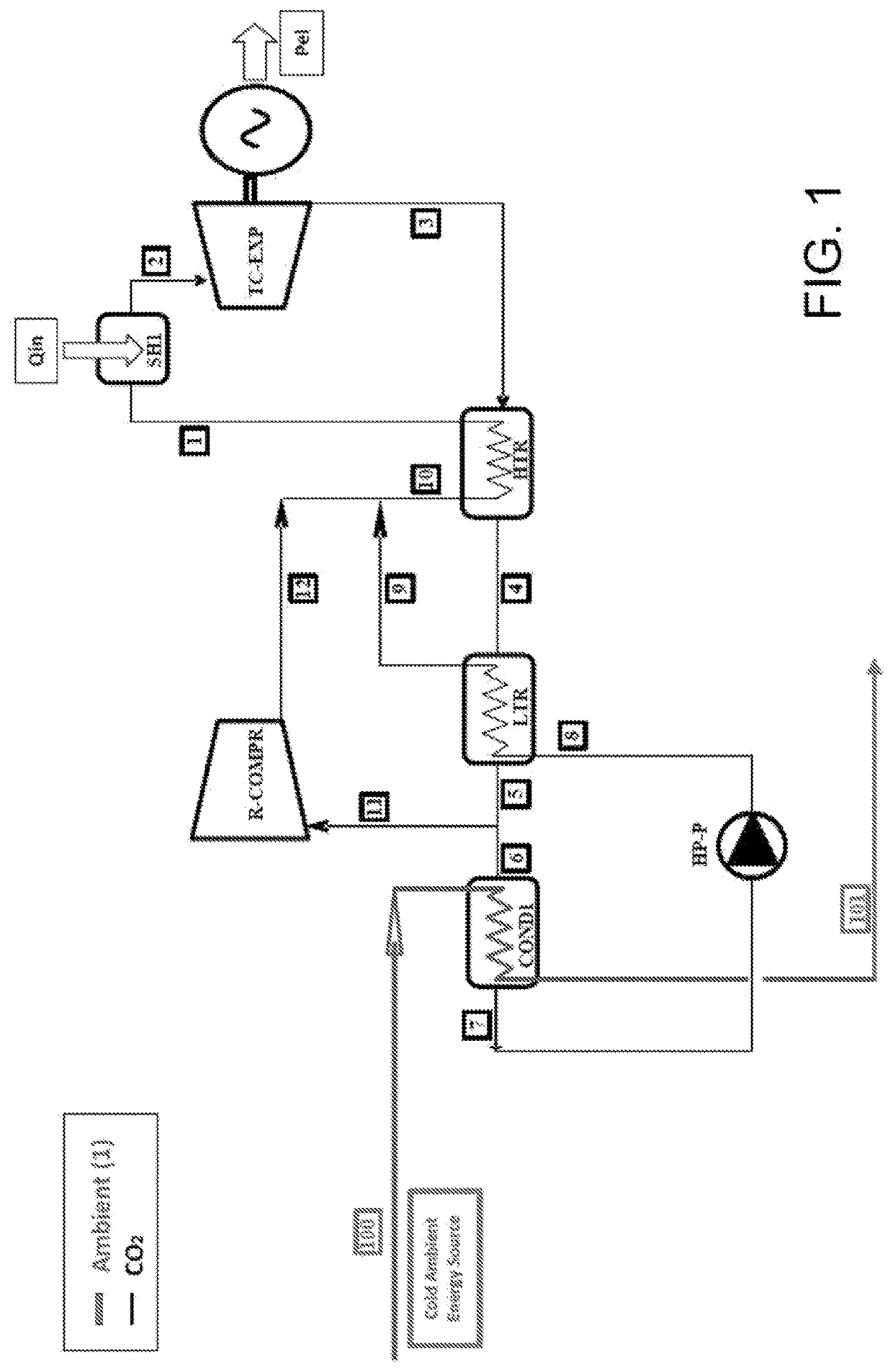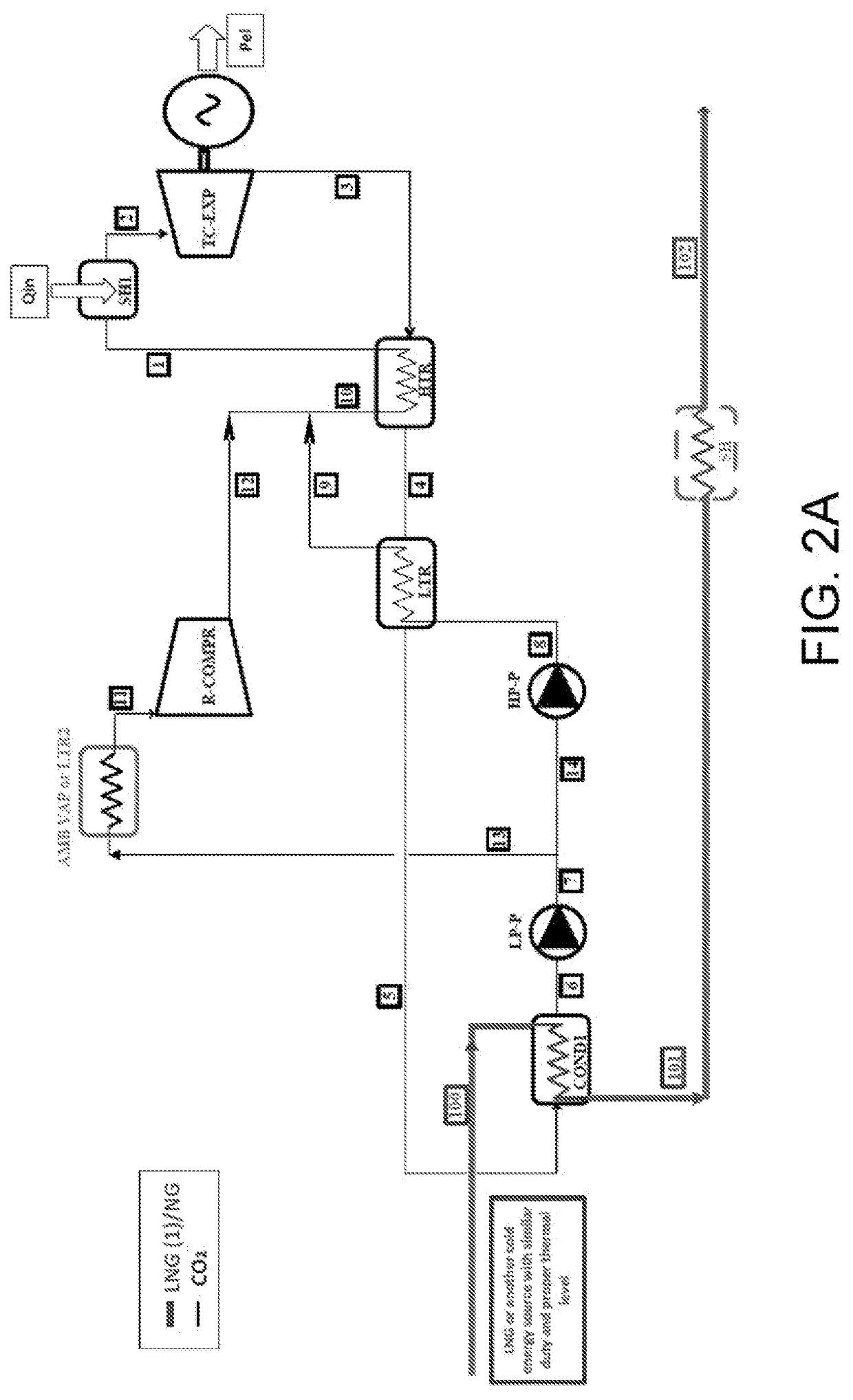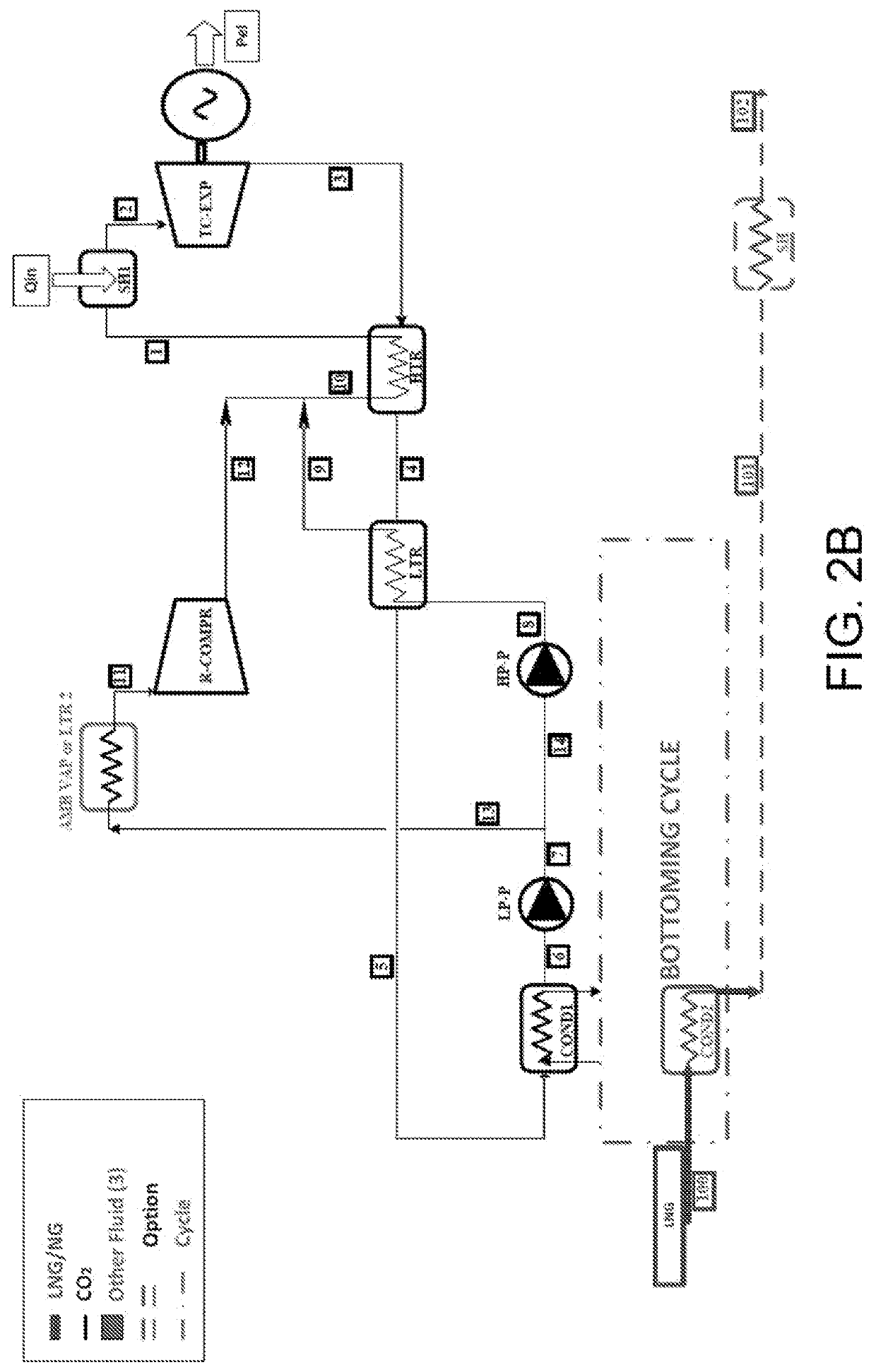Recompressed transcritical cycle with vaporization in cryogenic or low-temperature applications, and/or with coolant fluid
- Summary
- Abstract
- Description
- Claims
- Application Information
AI Technical Summary
Benefits of technology
Problems solved by technology
Method used
Image
Examples
Embodiment Construction
[0044]The present invention is particularly described in relation to regasifying liquefied natural gas (LNG), but it is equally applicable for regasifying or vaporizing other liquefied fluids stored at low temperatures (lower than about 0° C.) or at cryogenic temperatures (lower than −45° C.)
[0045]For example, the present invention is applied for regasifying a liquefied gas selected from the group which comprises, for example: air, nitrogen, commercially available hydrocarbon compounds such as alkanes, including for example propane and butane, or alkenes, including for example ethylene and propylene.
[0046]The terms “evaporation” and “vaporization”, which are applicable to LNG, are to be intended as synonyms in the following description.
[0047]Moreover, “liquefied natural gas”, later also referred to as “liquefied gas”, in the present description means a liquid obtained from natural gas after suitable refining and dehydrating processes and next cooling and condensation steps.
[0048]Mor...
PUM
 Login to View More
Login to View More Abstract
Description
Claims
Application Information
 Login to View More
Login to View More - R&D
- Intellectual Property
- Life Sciences
- Materials
- Tech Scout
- Unparalleled Data Quality
- Higher Quality Content
- 60% Fewer Hallucinations
Browse by: Latest US Patents, China's latest patents, Technical Efficacy Thesaurus, Application Domain, Technology Topic, Popular Technical Reports.
© 2025 PatSnap. All rights reserved.Legal|Privacy policy|Modern Slavery Act Transparency Statement|Sitemap|About US| Contact US: help@patsnap.com



